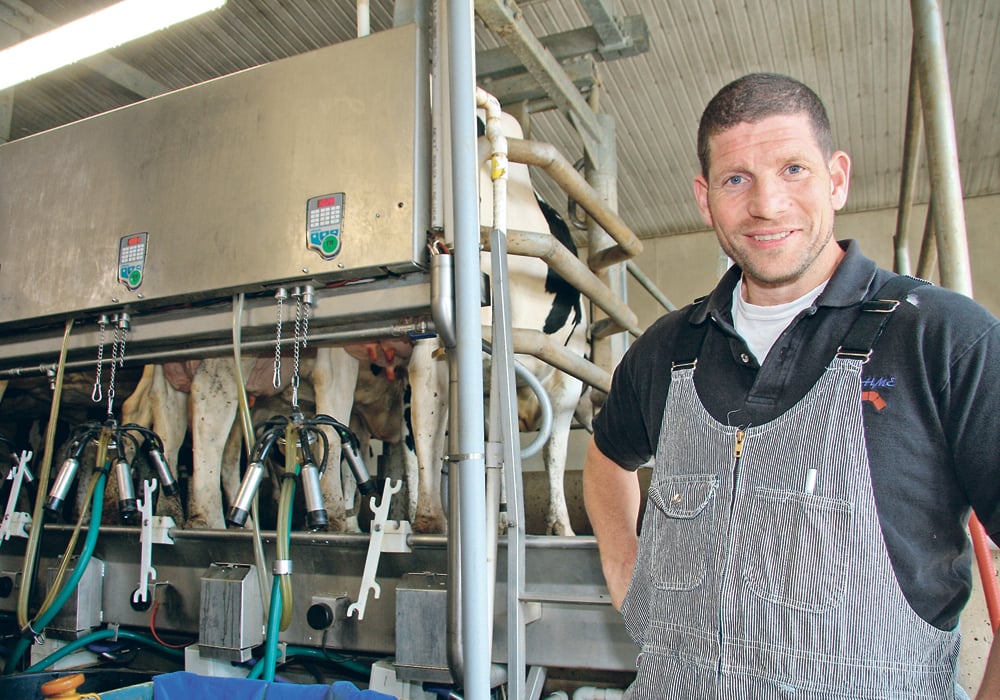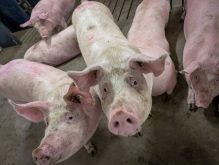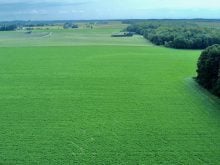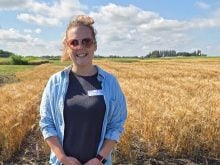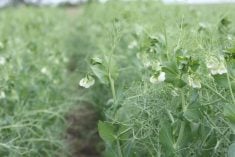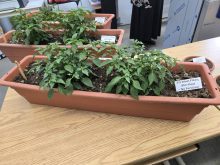The Loewith dairy farm has a five-point mission statement pinned to the wall to remind staff of its values and priorities
COPETOWN, Ont. — When Ben Loewith walks through the dairy barns on his family farm, he is filled with contentment from a job well done.
Keeping a modern dairy sustainable means protecting the environment, contending with urban encroachment, finding competent labour and raising healthy, productive cows.
Continuous improvement in all those areas has always driven the Loewith family, who own a 490-cow dairy just outside of Hamilton, Ont.
The farm was started in 1948 by Joseph Loewith and today his grandson, Ben, is working through a multi-layered farm-succession plan with his father, Carl, and uncle, Dave. Ben Loewith is the only one of his generation who returned to the farm while his siblings and cousins have careers outside of agriculture.
Read Also

New coal mine proposal met with old concerns
A smaller version of the previously rejected Grassy Mountain coal mine project in Crowsnest Pass is back on the table, and the Livingstone Landowners Group continues to voice concerns about the environmental risks.
A five-point mission statement posted in the farm office is a daily reminder for the family and staff to value good food production, animal welfare, environmental protection and community responsibility.
“My father and my uncle have always had a philosophy of continued growth and continued improvement, which are two separate things,” said Loewith.
The family has followed a slow and steady rate of growth that has provided a good living for all shareholders.
The farm has grown since Loewith returned in 1999 from an office job in Etobicoke, Ont. The farm was expanding and he was disenchanted with working in an office.
He came back as new buildings were under construction and more cattle were being added to the herd of 150 Holsteins.
The goal was to improve cow comfort and increase efficiency.
The old facility provided an outdoor exercise yard where the cows were fed in bunks before returning to a free stall barn.
Once the new barns opened, cow health improved. The stalls were bedded with sand and were wider and longer to accommodate big, modern cows.
The cows were no longer walking in mud so their feet were healthier. Air quality and temperature was better. In this region summers can reach 30-35 C, plus high humidity. Under the old system, finding respite from the heat was a daily challenge for cattle and workers.
More stalls were added in 2012 and two years later, they opened a second barn for 200 cows, plus the young stock.
Construction projects can be stressful but in this part of the province they also live within the Ontario Green Belt with its restrictions on building to protect farm land. They also fall under further restrictions from the City of Hamilton, about 10 minutes away.
If they want to build a new barn, there are minimum distance requirements, lot coverage guidelines where only a certain percentage of the yard may be covered with a roof. For example on a 100-acre parcel, only five acres can be covered so they have learned to strategically place barns, silage pits and manure storage.
“I have no problem with that. In fact, I am for it, however if you have an agriculture enterprise that needs to build to sustain their industry and you are in an area that is zoned agricultural, they should be lessening those restrictions to allow people to expand,” Loewith said.
The land cannot be developed for housing and he can’t add another barn on the home place because the farm is too close to neighbours.
“When people say they are in support of green belt legislation and they are in support of agriculture they generally picture fields of sunflowers and goldenrod, not animal agriculture,” he said.
Included in the legislation are requirements for manure spreading with a nutrient management plan that takes into account when they can spread, ground conditions, nutrient loads and proximity to waterways. Soil testing is also required. They can spread manure on a neighbour’s field under an agreement
“It comes down to being a good citizen. They are, for the most part, science-based practices that the industry should be following,” he said.
Keeping a farm going means finding competent staff.
Three family members, two to three full-time herd workers and 10 part-time workers handle the weekend and evening milkings are employed there.
The farm has started to make use of the temporary foreign workers program to get enough workers.
“When we look at our labour costs and our labour requirements we do have family labour but every hour is accounted for. There is no spouse doing the books in her spare time or kids feeding calves after school,” he said.
Loewith’s children clock in and clock out like any other employee because he said no one is expected to work for free.
“A huge reason we went with temporary foreign workers was not because I had problems finding people to work and not because there was something wrong with the quality of work…it is not a stable workforce,” he said.
While there may be willing workers in the community, affordable housing is a problem.
“The cost of housing is a huge barrier to our staffing efforts. Bare bones housing starts at $550,000 for a two-bedroom, one-storey house,” he said.
Buying more land to expand their 850 acres is another barrier. Land is around $13,000 per acre. The parcels are often small and do not come up for sale often.
Their own farm is split into small parcels in 50-55 fields where they hire custom operators to grow corn and alfalfa for cattle feed.
Loewith is interested in future expansion but there is a limit to how many animals can be on this parcel. Further, the cost and availability of more milk quota under the supply-managed system is another hindrance.
Expansion may have to come in other ways while they can still maintain good animal husbandry practices. The answer may be higher productivity per cow.
“In the last five to seven years, there are so many farmers doing really good jobs. The amount of milk farms are getting now per cow would have been unheard of 10 years ago,” he said.
It is more common for a good cow to yield 45 kilograms of milk per day compared to 35 kg per cow 10 years ago.
Improved genetics, nutrition and a better understanding of animal welfare have contributed to greater production.
As well, the Loewith family is interested in research and wants to learn more about better feed, improved housing and social behaviour among the cows.
“Surround yourself with good advisers and do what they say,” Loewith said.
Their calves are still raised in hutches but they have looked at research that promotes placing calves in pairs early in life.
Another improvement is offering cows more social life.
In the past, calving cows were placed in an isolation pen. In their newest barn, these are held together for the month before calving within a permanent social group of 15. They seem to calve easier and there is less stress in a friendlier atmosphere.
Heifers are bred with sexed semen and older cows may be bred to beef bulls.
“They are the best genetics on the farm so you want to get a heifer calf from those heifers. About the bottom 30 percent of the herd is bred to Angus,” he said.
They earn a premium of about $100 for the crossbreds and they gain better than straight-bred cattle.
DNA tests are run on the heifers and the results are used as a selection tool to pick out the best animals. The result is more profitable cattle with more longevity.
The farm is open for tours for school groups and other interested people who often express surprise when they see bright, clean barns.
“The environment is just much more bright and airy than they were expecting,” Loewith said.
Further, many guests did not know how technological the industry has become to measure behaviour and health with pedometry, tests for milk quality and health.
The national quality milk program, ProAction is also emphasized on Loewith’s farm. The program has meant more record keeping, but Loewith sees longer-term benefits.
“I think it gives the industry a good face to the public. You do have to have quality assurance for things like sustainability, biohazards, animal welfare. We have to show we are not making a passing effort but a real effort to live up to our mandate,” he said.
The industry has improved overall with more attention paid to cow comfort and pain relief for procedures like dehorning.
“I don’t like animal rights activists that are trying to eliminate the industry but when you have some groups that are genuinely trying to bring attention to practices that are not humane, every now and then you have to stop and listen,” he said.
Loewith is somewhat uncertain about who will run the farm in the future. To solidify longevity of the farm, a succession plan for the three partners is in place. Working with lawyers and accountants they developed a plan to ensure a good income for Loewith’s father and uncle and sustainability for this generation. If another family member decided to return the succession plan would be opened up and reworked.
“When people start succession plans there is this over-riding expectation that the goal of this is to get all the assets transferred from the name of one generation to the next generation,” he said.
They approached it differently and broke the business plan into three categories.
First the value of the assets and who owns them was considered.
Second, they decided who would own the growth of the farm.
Third, they decided who has the controlling shares and the power to make decisions
“Once you break it three different ways, you handle them separately. Whoever owns the assets doesn’t necessarily have to own the growth and doesn’t necessarily have to be the person who has control over making decisions on the farm,” he said.
When Loewith’s father retires next year, he will be paid out and will still receive a share of the growth. Once one of the original shareholders retires or turns 70, the voting shares are passed on to the remaining shareholders. Eventually. the controlling shares will go to Loewith.
The spouses are not involved in the operation.
“It was a long process and it was not easy. We had a lot going for us. The farm was profitable. My father and uncle always paid themselves well enough to have assets outside the farm and we all get along,” he said.




